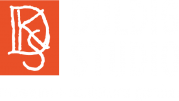Audio Descriptions
Karl’ Sculpture Garden Sculpture Descriptions
Supported by Creative Partnerships Plus 1 funding and in collaboration with Vision Australia, key sculptures in the sculpture garden are described in the following audio files to augment your sculpture garden experience.

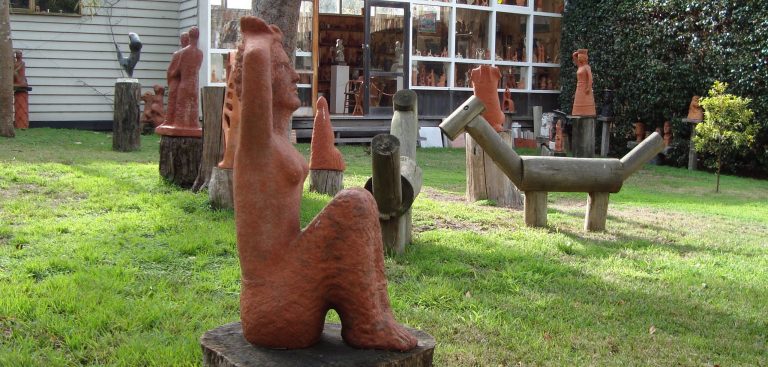
INTRODUCTION
Welcome to Karl’s sculpture garden at 92 Burke Rd in East Malvern Melbourne
The garden contains over one hundred sculptures, mostly created by Karl Duldig in Australia post 1940. He began to place sculptures around the perimeter of the back garden soon after the family moved in in 1955 and continued until the end of his life in 1985.
The large sculptures have been built up entirely hollow without any armatures and often Karl deliberately exposed or opened up the inside of his work to demonstrate his working method. He also liked to retain the ‘fingerprints’ of his working methods and the surface texture of the work was very important to him.
We invite you to explore some of the highlight works from the sculpture garden through this selection of audio descriptions prepared in collaboration with Vision Australia with support from Creative Partnerships Australia and invite you to extend your experience by visiting us for touch tours.
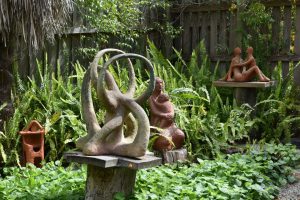
Created during Karl’s exploratory innovative period this abstract work demonstrates the extraordinary skill of the artist in handling the clay medium. He would have liked water to cascade around it in the form of a fountain. Gently explore this delicate organic form and notice where it has been repaired over the years.

Carved while Karl was serving in the army during World War II, the original sandstone slab was quite shallow so the artist has conceived the head and digger’s hat in profile as if emerging from the stone. In 1945 ‘Digger’ was the cover image of the catalogue to Karl’s first exhibition in Australia at Kosminsky Galleries.
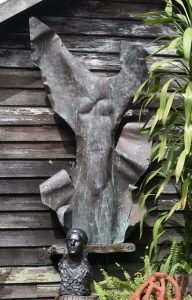
Using residual copper sheeting left over from a major commission Karl hand beat the irregular fragment into a female form which bears a resemblance to the ‘Victory of Samothrace’ in the Louvre, however the work is open to other interpretations.

An example of Karl’s mid-career interest in the spatial elements of the human form and head, this sculpture rewards exploring from all sides.
It has been successfully cast into bronze and the first bronze cast is in a private collection in Naxos, Greece.
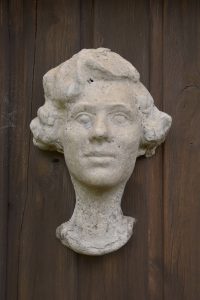
Karl met Slawa’s sister Rella while they were both students of Anton Hanak in Vienna. This portrait was among the works hidden in a basement in Paris during World War II and returned to the artist in Australia in the decades after the war.

The kneeling female figure was one of Karl’s favourite subjects. This work is structurally challenging and explores the void in a unique way which clearly demonstrates his control of the clay medium. The effect produced by this ‘negative space’ was explored by many modernist sculptors, notably Henry Moore and Barbara Hepworth.
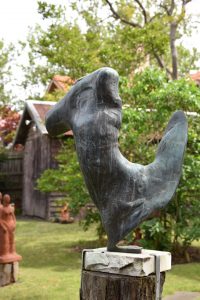
From a found piece of timber in the bush Karl transformed the form according to his own vision to suggest a dancing female figure. The original ‘scribbly’ worm marks in the wood can still be felt in the finished bronze work.
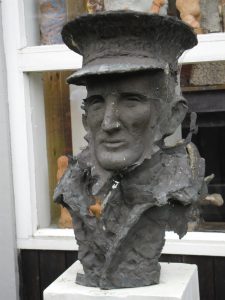
A portrait of Padre Charles Young was modelled in 1942 in a tent in Royal Park whilst Karl was serving in the AIF. Later it was commissioned in bronze by Padre’s family. The first cast was ‘faulty’, with exposed flashing and other fragmented details, but rather than have it melted down Karl loved the striking effect and displayed it prominently ever since.
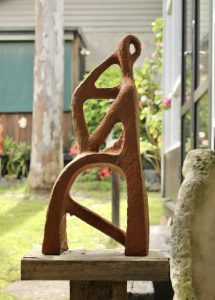
Inspired by a famous Rodin sculpture, Karl found a unique way to express his version of this work. Simplified forms nevertheless convey a contemplative figure.
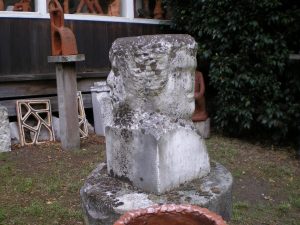
As a student in Vienna in the 1920’s Karl worked mostly in stone. In this late career work he has carved directly into the marble block, successfully transforming it into the classical two-faced god ‘Janus’. It was the last work the artist completed in this medium.
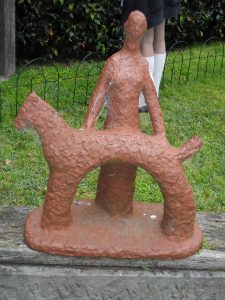
In this simple understated form Karl has symbolically created an intimate understanding between a woman and an animal. Nearby, in the window of the Artists’ Studio there are two smaller versions of this subject. Note the rough surface texture which adds a further decorative element to the work.

Originally modelled in clay, ‘Koré’ was the first major work Karl completed after the passing of his wife, Slawa, in 1975. First cast into bronze for the City of Caulfield in 1979, this work was stolen from its original Elsternwick site in 2013. In 2017 the Municipality of Stonnington commissioned a cast which is located in Central Park, Malvern, opposite the museum.
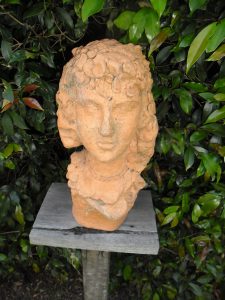
Karl modelled this spontaneous portrait of a young girl in one hour as a demonstration for an arts group.

The innovative use of two drainage pipes has been expanded here by Karl to create a traditional female torso. He has purposely exposed his working method – building up the form entirely hollow without any armature and his fingerprints are evident in the outside texture of the work.
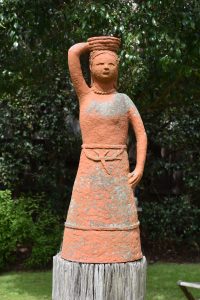
This unusual sculpture is built up entirely hollow. The bowl on the figure’s head is a reference to Karl’s time in Singapore in 1939-40 when he was so impressed by the Indian women who carried vessels on their heads. Note the artist’s fingermarks on the finished surface. Check if there is any water in the basket atop her head. Quite often birds will stop here to bathe or have a drink.

Based on a small earlier maquette the intimate relationship between a man and a woman is especially poignant in this work as the clay sculpture is pinch built and is entirely hollow. Notice how the figures melt into one form.

The Dream c. 1960, earthenware
The subject of a reclining couple first appeared in Karl’s work, ‘Young Lovers’, conceived and modelled in Vienna in the early 1920’s. In ‘Ensemble’ the internal and external spaces in and around the two figures are explored while at the same time the emotional connection between the man and the woman remains evident.
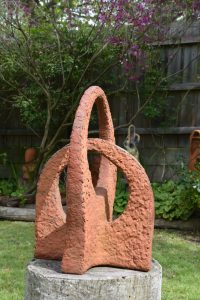
Unusual in Karl’s late period, this abstract sculpture illustrates his abiding interest in the space around and about the work as well as the form of the work itself. The interesting texture of the clay surface is an additional feature of this sculpture.

A highly unusual pose in Karl’s oeuvre, the crossed ankles and crossed hands over the figure’s head suggest a meditative concept. Karl has used the ‘hair’ to stabilise the upraised arms, at the same time creating an additional decorative detail.

Karl saw the famous bust of the Egyptian Queen Nofretéte in the Berlin Museum in the early 1920’s while on a tour with the S.C. Hakoah Wien football team. In his version of this bust Karl recalls the configuration of the Egyptian portrait: the head supported on its long neck by partial shoulders and surmounted with a large crown. This striking sculpture effectively uses the spaces between the form in a surrealist impression of the regal presence – a reminder of Karl’s life-long fascination with Egypt, the cradle of civilisation.
